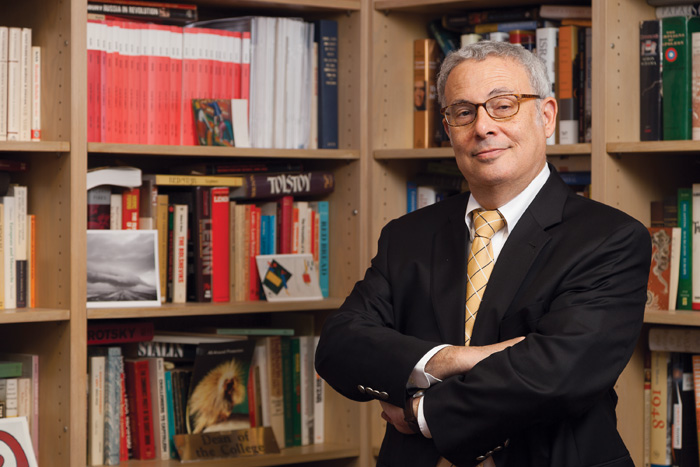Dickinson Matters: Remaining True to Ourselves

Photo by Carl Socolow '77.
By Neil B. Weissman, Interim President
I came to Dickinson in July 1975, simultaneously with the new president, Samuel Alston Banks. Although my arrival as an instructor on a two-year, nonrenewable contract was considerably less heralded than his, I did have the opportunity to observe the transition to new leadership. Dickinson’s current presidential transition will be my fifth here, albeit this time my role is rather different than previously. Reflecting both on my past experience of change and on the current state of the college, I approach service as interim president with real optimism. Let me explain why.
First, I point to quantitative measures of the college’s strength. Demand for a Dickinson education remains high, as evidenced by the recruitment of our largest class ever last year (733 in the class of 2019) and our record applications this year (6,140). The class of 2020 will be among Dickinson’s most talented and diverse. From the standpoint of finance, we are finishing the 2015-16 academic year in the black and have been able to invest additional funds in projects ranging from a new science lab to deferred maintenance. The college’s Standard & Poor’s rating remains A+, with an increasingly rare in higher education “positive outlook.”
We also had a strong year in recruiting talented faculty and staff. All seven of our newly hired tenure-line faculty, for example, were our first choices. This includes successful searches in such competitive fields as international business & management and psychology. On the administrative side, we are delighted with recruitment of our new, experienced and imaginative vice president for college advancement, Kirk Swenson. This too comes in a field where competition for good candidates is intense, particularly for an institution that is in presidential transition.
My chief reason for confidence in looking to the year ahead, though, rests with the interim Report on Strategic Direction produced by the college’s Strategic Planning Committee. As most of you know, Dickinson’s first comprehensive plan—Strategic Plan I—was drafted in 2000. It affirmed the college’s mission of providing a “useful education” in the liberal arts, articulated the Benjamin Rush narrative and shifted our strategy from “balance” to a focus on areas of excellence such as global education. Strategic Plans II and III, done at five-year intervals, essentially updated the first, adding a few key elements, including our initiative in sustainability and a heightened commitment to accountability, particularly regarding assessment of student learning.
The charge to the Strategic Planning Committee established last fall was not to produce another iteration of the original plan. No Strategic Plan IV but rather something novel. Meetings, open sessions, consultations and calls for input from all constituencies of the Dickinson community followed, punctuating the fall and winter calendars. With what result? A strong community consensus that Dickinson remain an undergraduate liberal-arts college; that our mission remain a “useful education”; that we remain committed to faculty as “teacher-scholars” who work closely with students; that we remain focused on leadership in global education and sustainability; and that top priorities remain enhanced alumni engagement and fundraising.
You will notice the refrain “remain.” It’s not that the report lacks innovation. The committee called for heightened attention to “inclusivity” at Dickinson, endorsed a civic engagement initiative and recommended extending our “layered support” for first-year students into a full “Dickinson Four” for all class years. We will consider these and other dynamic elements. Yet the report reaffirms our core commitments. In essence, Dickinson is a college that knows itself and understands how to build creatively on that foundation. What better, stronger way to enter a presidential transition and move forward?
Learn More
Published July 12, 2016